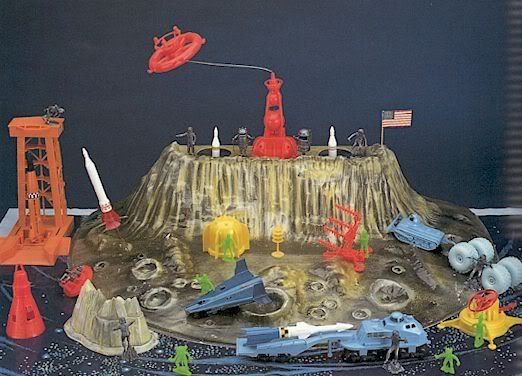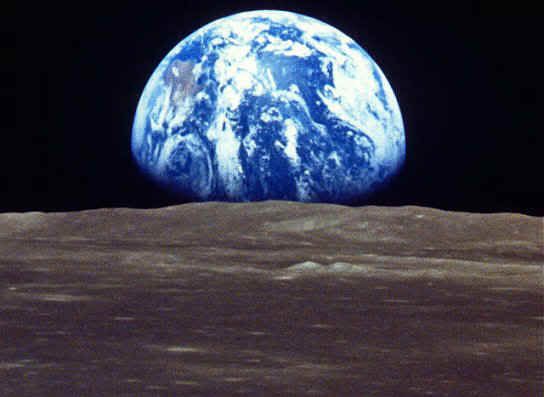In the 1970s, television screens showed images of "Moon Base Alpha," a virtual colony on the surface of the moon, on the British-produced "Space: 1999." They might have gotten the date wrong.
Yesterday, in the latest example of making science fiction into science fact, it was reported that NASA plans to establish a permanent base on the moon by 2024, four years after the agency plans to resume manned trips there. For more than 50 years, a moon base has been the stuff of imagination in books and movies, and of scientific conjecture. NASA's plan is to equip the base with several lunar rovers to explore the surface of the moon.
The base would be set at either of the moon's poles, which have access to more sunshine than the rest of the surface, and which will better serve the base's solar-powered energy system.
Of course, the question is what to make of all this? On the one hand, is it really justifiable to spend the kind of money that space exploration requires when we have people without enough to eat or without healthcare? (Whether money can solve those problems is another matter, and it seems unlikely that money alone would be sufficient to break through the corrupt governments that block humanitarian aid in some parts of the world, or to solve the problem of corrupt corporations that gouge people for healthcare coverage and pharmaceuticals.)
Once President Kennedy set the goal for lunar exploration, Americans spent a good deal of the next decade and a half with a hopeful purpose. The space race had a positive influence on the culture, and saw people rooting for new achievements in science rather than rooting for their side in the latest global conflict. (How much more positive an influence that era would have seen but for the Vietnam War is something we'll never know.) Kennedy said of the plan to reach the moon, "new hopes for knowledge and peace are there." Sadly, those were never realized.
Significantly, however, the discoveries of the space age fueled many industries for the next several decades. Cell phones, iPods, personal computers and microwave ovens all owe a debt to the experimentation and achievements that came from that period. Even architecture was more bold and hopeful, as Googie design utilized lines and angles -- and imagination -- that soared. A return to the moon, and the realization of fifty years of thoughtful design in films, drawings, even toys, could be the catalyst for a new era of a hopeful, positive influence in the culture. All of that assumes that the intentions of international cooperation for the base are genuine. Using space for military purposes, as Donald Rumsfeld reportedly intended when he became Secretary of Defense, would be a profound negative, and a betrayal of hope.
In 1968, as violence at home and abroad reached a peak, and as the divide among Americans and among older and younger generations grew wider, astronauts from the Apollo 8 mission to the moon sent back a picture of earth, as illuminated by the sun and seen from the surface of the moon. The picture has been called one of the "most influential environmental photographs ever taken," and as an anonymous telegram to astronaut Frank Borman put it, "saved 1968" in its depiction of a finite planet, a small part of the vast universe.
That's the kind of thing the world could use right now.
Yesterday, in the latest example of making science fiction into science fact, it was reported that NASA plans to establish a permanent base on the moon by 2024, four years after the agency plans to resume manned trips there. For more than 50 years, a moon base has been the stuff of imagination in books and movies, and of scientific conjecture. NASA's plan is to equip the base with several lunar rovers to explore the surface of the moon.
The base would be set at either of the moon's poles, which have access to more sunshine than the rest of the surface, and which will better serve the base's solar-powered energy system.

Of course, the question is what to make of all this? On the one hand, is it really justifiable to spend the kind of money that space exploration requires when we have people without enough to eat or without healthcare? (Whether money can solve those problems is another matter, and it seems unlikely that money alone would be sufficient to break through the corrupt governments that block humanitarian aid in some parts of the world, or to solve the problem of corrupt corporations that gouge people for healthcare coverage and pharmaceuticals.)
Once President Kennedy set the goal for lunar exploration, Americans spent a good deal of the next decade and a half with a hopeful purpose. The space race had a positive influence on the culture, and saw people rooting for new achievements in science rather than rooting for their side in the latest global conflict. (How much more positive an influence that era would have seen but for the Vietnam War is something we'll never know.) Kennedy said of the plan to reach the moon, "new hopes for knowledge and peace are there." Sadly, those were never realized.
Significantly, however, the discoveries of the space age fueled many industries for the next several decades. Cell phones, iPods, personal computers and microwave ovens all owe a debt to the experimentation and achievements that came from that period. Even architecture was more bold and hopeful, as Googie design utilized lines and angles -- and imagination -- that soared. A return to the moon, and the realization of fifty years of thoughtful design in films, drawings, even toys, could be the catalyst for a new era of a hopeful, positive influence in the culture. All of that assumes that the intentions of international cooperation for the base are genuine. Using space for military purposes, as Donald Rumsfeld reportedly intended when he became Secretary of Defense, would be a profound negative, and a betrayal of hope.
In 1968, as violence at home and abroad reached a peak, and as the divide among Americans and among older and younger generations grew wider, astronauts from the Apollo 8 mission to the moon sent back a picture of earth, as illuminated by the sun and seen from the surface of the moon. The picture has been called one of the "most influential environmental photographs ever taken," and as an anonymous telegram to astronaut Frank Borman put it, "saved 1968" in its depiction of a finite planet, a small part of the vast universe.
That's the kind of thing the world could use right now.

More info: Wikipedia: Apollo 8


